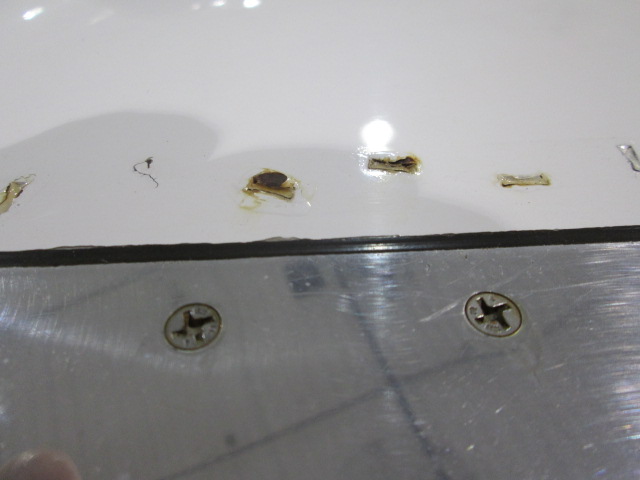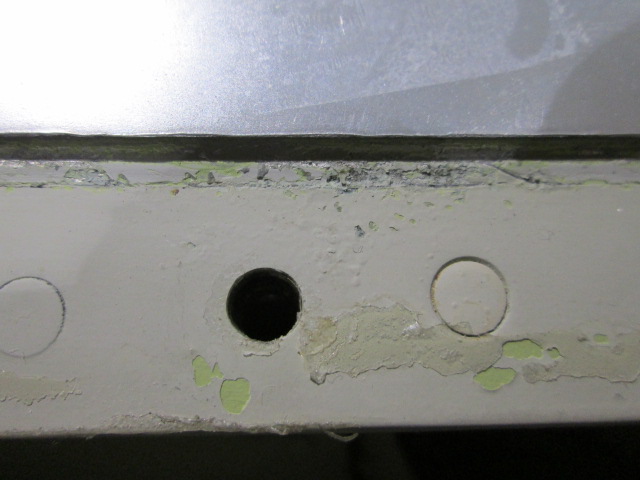 |
 |
|
Steel fastener corrosion on the upper surface skin of the wing. |
Example of leading edge corrosion after TKS panels have been removed. |
All aircraft are vulnerable to corrosion due to environmental conditions and the quality of maintenance and care they receive. The Hawker 125 series is no different, but added vigilance is needed due to its use of TKS Fluid. The condition of protective coatings and paint along with proper maintenance procedures will ensure that corrosion will be kept in check, and additional maintenance costs can be avoided. A thorough eye during a pre/post-flight inspection can detect and prevent several corrosion issues.
Below are three areas of a Hawker aircraft that are susceptible to corrosion and that should be visually inspected on a regular basis.
Wing Surface
The condition of the paint on the upper and lower wing surfaces is an area of concern. Hawker aircraft use steel fasteners and if the protective finish/paint is not well maintained on these fasteners, they can corrode and require repair, per a Structural Repair Manual procedure, or replacement.
Replacing these fasteners requires entering the wing, which, in some circumstances, may result in fuel leaks. The wing skin around the fastener can also corrode and get real expensive real quick, requiring engineering help from the manufacturer for a repair scheme.
Example of properly sealed wing leading edge TKS panel.
Joints
On Hawker 800 or newer aircraft, the joint between the TKS panels and the leading edges are sealed with a filling compound. It is critical to maintain this area to prevent leading edge rebate corrosion. Any indication of cracked or missing filler should be immediately addressed and repaired. If the rebates are allowed to continue to corrode, it will require repair. If left for too long, it will also require engineering help to develop an approved repair.
Trim Tab Rod Ends
Are you applying the appropriate silicone lubricant (Dow Corning 111) on the trim tab rod ends as spelled out in the Hawker Maintenance Manual? If you are not, you run the risk of TKS fluid entering and corroding the bearing. And if the bearing becomes corroded, it requires replacing. Corrosion is detected by the appearance of a rust-colored streaking aft of the trim tab rod ends. The elevator trim rod ends appear to be the most susceptible. However, by the time you see this streaking, it is too late. The rod end is already corroded and needs to be replaced. This is not a high dollar item compared to the others but an added expense that could have been prevented.
You can't prevent all corrosion, but it can be kept to a minimum when caught early with preventive methods such as careful pre/post flight inspections and prompt remedial action. Feel free to contact me anytime for more information about corrosion detection/prevention methods or any other Hawker technical questions.
Duncan Aviation has a long history servicing all models of Hawker aircraft.
December 2025
December 2025
December 2025
November 2025
November 2025